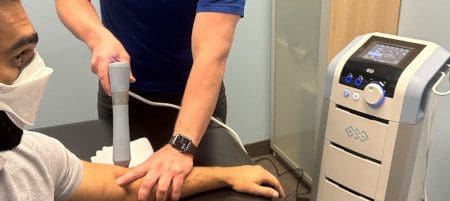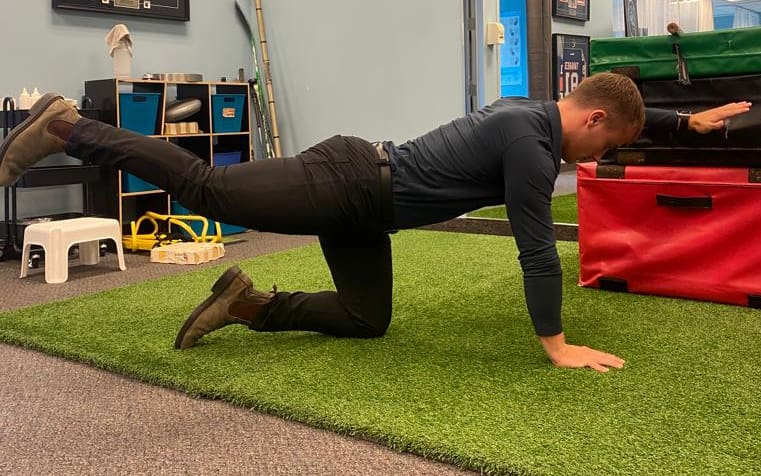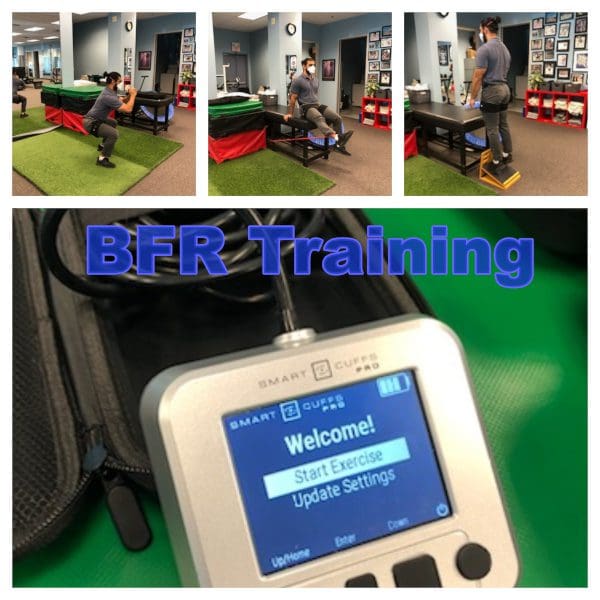I. Introduction
Blood Flow Restriction (BFR) therapy has emerged as a novel training method with growing popularity in recent years. This therapy involves partially restricting blood flow to a targeted muscle group during exercise or rehabilitation using specialized cuffs or bands. Despite its counterintuitive nature, BFR has demonstrated numerous benefits for individuals aiming to enhance muscle strength, endurance, and recovery from injury.
Understanding the underlying science behind BFR is essential for maximizing its efficacy and ensuring safe implementation. Proper equipment and technique are paramount, emphasizing the importance of having BFR administered by trained professionals.
In this article, we delve into the intricacies of Blood Flow Restriction therapy at Sheddon Physiotherapy and Sports Clinic in Burlington, exploring its advantages, mechanisms of action, suitable candidates, and
potential risks. Our aim is to equip you with comprehensive knowledge to determine if BFR aligns with your unique needs.
II. What is Blood Flow Restriction therapy?
Blood Flow Restriction therapy, also known as occlusion training, is a form of resistance training involving the partial restriction of blood flow to a muscle group while exercising. Utilizing specialized cuffs or bands, typically placed around the upper arm or thigh, this technique reduces arterial blood flow to the muscles while allowing venous return. During BFR exercise, restricted blood flow leads to metabolic stress within the muscles, prompting increased muscle fiber recruitment and activation. Consequently, individuals may experience heightened
muscle hypertrophy, strength gains, and endurance improvements compared to conventional resistance training.
While the precise mechanisms underlying BFR are still under investigation, the therapy’s efficacy has been validated in both healthy individuals and those undergoing rehabilitation.
III. How is Blood Flow Restriction therapy performed?
Blood Flow Restriction therapy can be administered through various methods, primarily involving specialized cuffs or bands:
- Pneumatic cuffs: These cuffs utilize compressed air to apply controlled pressure to the limb, typically used in clinical settings for precise pressure regulation.
- Elastic bands: While less accurate than pneumatic cuffs, elastic bands offer a portable alternative for BFR therapy, often used in home settings or when access to pneumatic equipment is limited.
Regardless of the method employed, it is imperative to enlist the expertise of trained professionals for BFR administration. Proper cuff placement, pressure calibration, and patient monitoring are essential to mitigate potential risks associated with incorrect technique.
IV. What are the benefits of Blood Flow Restriction therapy?
Blood Flow Restriction therapy confers a myriad of benefits, including:
- Increased muscle strength and hypertrophy: BFR induces significant gains in muscle strength and hypertrophy, even with lighter loads compared to traditional resistance
- Improved endurance and aerobic capacity: By fostering a hypoxic environment within muscles, BFR enhances mitochondrial density, thereby augmenting aerobic capacity and endurance.
- Reduced muscle damage and soreness: BFR minimizes muscle damage and soreness post-exercise, facilitating quicker recovery and allowing for more frequent training sessions.
- Enhanced recovery from injury: BFR accelerates the healing process for injured muscles and joints, aiding in tissue repair and reducing recovery times.
- Prevention of muscle loss during immobilization: During periods of immobilization, such as post-surgery or injury, BFR preserves muscle mass and strength, mitigating muscle atrophy.
V. Who can benefit from Blood Flow Restriction therapy?
Blood Flow Restriction therapy caters to diverse populations, including:
- Athletes seeking performance enhancement: BFR supplements traditional training methods for athletes aiming to boost muscle strength, endurance, and recovery.
- Patients undergoing rehabilitation: BFR expedites the recovery process for individuals recuperating from surgery or injury, promoting muscle maintenance and functional restoration.
- Elderly individuals: BFR counteracts age-related muscle loss and weakness, enhancing overall physical function and reducing fall risks.
- Chronic condition suffererers: BFR may benefit individuals with conditions like osteoarthritis or diabetes by improving muscle strength and functional capacity.
- Individuals with limited training access: BFR offers a feasible option for individuals with restricted access to conventional resistance training facilities or equipment.
VI. What are the potential risks of Blood Flow Restriction therapy?
While generally safe, Blood Flow Restriction therapy entails potential risks, including:
- Compartment syndrome: Excessive pressure during BFR may lead to compartment syndrome, characterized by severe pain and tissue damage.
- Nerve damage: Improper cuff placement may cause nerve damage, manifesting as numbness, tingling, or weakness.
- Blood clots: BFR can elevate blood clot risk, particularly in susceptible individuals or those with a history of thrombosis.
- High blood pressure: BFR may induce temporary blood pressure elevation, posing risks for individuals with hypertension.
- Contraindications: Certain medical conditions, including deep vein thrombosis, peripheral artery disease, varicose veins, hypertension, pregnancy, or cancer, warrant caution or preclude BFR use.
To mitigate risks, adherence to proper BFR protocols under the supervision of trained professionals is imperative.
VII. Conclusion
Blood Flow Restriction therapy presents a promising avenue for enhancing muscle function, performance, and rehabilitation outcomes. While offering numerous benefits, it is essential to recognize potential risks and ensure the therapy is administered by qualified professionals.
At Sheddon Physiotherapy and Sports Clinic in Burlington, our team of trained therapists is equipped to deliver safe and effective Blood Flow Restriction therapy tailored to your needs. Contact us today to explore how BFR can optimize your fitness or rehabilitation journey.
Our Burlington clinic is conveniently located just 2 min south of IKEA Burlington and 6 min north of Burlington Golf & Country Club, on Plains Rd East.






































